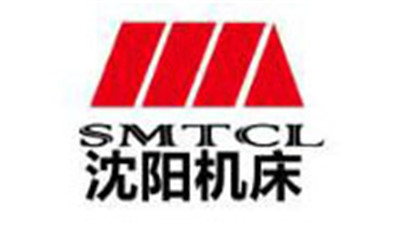10 Essential Tips for Choosing the Right Wire Type Transformer for Your Needs
Table of Contents
- Understanding the Different Types of Wire Type Transformers and Their Applications
- Key Factors to Consider When Selecting a Wire Type Transformer
- Evaluating Voltage and Power Ratings for Your Wire Type Transformer
- The Importance of Transformer Efficiency in Your Selection Process
- Safety Standards and Certifications for Wire Type Transformers
- Common Mistakes to Avoid When Choosing a Wire Type Transformer
- Enhancing Electrical Systems with Three-Phase Dry Type Transformers: Benefits and Applications
- FAQS
- Conclusion
- Related Posts
In today’s fast-changing world of electrical solutions, picking the right wire-type transformer is more important than ever if you want top-notch performance and efficiency. According to a recent report by Global Market Insights, the worldwide transformer market is expected to hit over $100 billion by 2025. And, honestly, wire type transformers are playing a pretty big role here because they’re so versatile and used across many different industries. Plus, with the rise of renewable energy and smarter grid tech, this market’s growth is only speeding up.
John Smith, a well-respected expert from Power Solutions Inc., stresses just how key it is to make an informed choice when it comes to selecting a wire-type transformer. He says, ‘Choosing the right one not only makes your electrical systems more reliable but also helps you save energy overall.’ With so many options out there, I’ve put together this handy guide with ten essential tips to help you find the perfect fit for your specific needs. By understanding the main features, specs, and uses of different wire-type transformers, you'll be better equipped to pick the one that matches your operations and supports your future plans.

Understanding the Different Types of Wire Type Transformers and Their Applications
When selecting a wire type transformer, it is crucial to understand the various types and their specific applications. Wire type transformers come in numerous forms, such as toroidal, unshielded, and encapsulated models, each designed for different functions. For instance, toroidal transformers are renowned for their efficiency and compact size, making them ideal for applications in audio equipment and high-end electronics. On the other hand, unshielded transformers are often utilized in less sensitive environments due to their simplicity and cost-effectiveness.
At Dezhou Xinping Electronics Co., Ltd., we pride ourselves on being a national high-tech enterprise with over two decades of expertise in manufacturing precision electronic transformers. Since our founding in March 2001, we have consistently focused on delivering high-quality transformers tailored to meet diverse industry requirements. Understanding the unique characteristics of each wire type transformer allows our clients to choose the best solution for their specific needs, ensuring optimal performance in every application. By leveraging our extensive knowledge and innovative manufacturing processes, we provide reliable transformer solutions that drive success for businesses across various sectors.
Key Factors to Consider When Selecting a Wire Type Transformer
When selecting a wire type transformer, several key factors should be considered to ensure that the chosen transformer meets specific project requirements. Firstly, the voltage rating is crucial, as it determines the transformer's ability to handle the electrical demands without risk of failure. Understanding the operating environment is equally important; for instance, transformers used in industrial settings may need to be robust and capable of withstanding harsh conditions, while those intended for residential use might prioritize efficiency and noise reduction.
Another factor to consider is the type of insulation used in the transformer. High-quality insulation materials can significantly impact the lifespan and reliability of the transformer, especially under fluctuating load conditions. Additionally, the application of the transformer, whether it’s for power generation, solar installation, or any other use, will dictate specific requirements such as efficiency ratings and compatibility with existing systems.
By carefully evaluating these factors, one can select the appropriate wire type transformer that aligns with their specific needs and ensures optimal performance.
Evaluating Voltage and Power Ratings for Your Wire Type Transformer
When selecting a wire type transformer, evaluating the voltage and power ratings is crucial to ensure optimal performance for your specific application. The voltage rating indicates the maximum voltage the transformer can handle without risking insulation failure. It’s essential to choose a transformer with a voltage rating that matches or exceeds the requirements of your electrical system to prevent any potential hazards.
Power ratings, measured in volt-amperes (VA), are equally important. They reflect the transformer's capacity to handle load without overheating or damaging components. When determining the appropriate power rating, consider the total wattage of the devices that will be connected to the transformer. It's wise to select a transformer with a power rating that exceeds your requirements by at least 20% to account for spikes in demand and ensure longevity. By carefully analyzing both the voltage and power ratings, you can make an informed choice that enhances the reliability and efficiency of your electrical system.
The Importance of Transformer Efficiency in Your Selection Process
When selecting a wire type transformer for your specific needs, one critical factor that cannot be overlooked is transformer efficiency. Efficiency directly affects both performance and operating costs, making it a paramount consideration during the selection process. High-efficiency transformers effectively convert electrical energy with minimal losses, leading to reduced energy consumption and lower utility bills over time. This aspect is particularly important in applications where transformers operate continuously or under heavy loads, leading to substantial savings in energy costs.

Moreover, a transformer’s efficiency can impact its lifespan and reliability. Transformers that are less efficient often generate more heat, which can lead to overheating and ultimately shorten the operational life of the device. Choosing a transformer with a higher efficiency rating allows for better thermal management and enhances component longevity. Additionally, an efficient transformer can contribute to improved system performance, ensuring that the power supply remains stable and reliable under varying load conditions. Therefore, investing in a high-efficiency transformer is not just a prudent financial decision; it is also an essential step towards ensuring the reliability and sustainability of your electrical systems.
Safety Standards and Certifications for Wire Type Transformers
When selecting a wire type transformer, adhering to safety standards and certifications is crucial to ensure both compliance and safety in electrical applications. Most regions require transformers to meet national and international standards, such as those established by the Institute of Electrical and Electronics Engineers (IEEE) and the International Electrotechnical Commission (IEC). According to a report by the Global Transformer Market, nearly 42% of transformer failures can be attributed to poor insulation and inadequate safety measures. Therefore, choosing transformers that adhere to safety certifications like UL (Underwriters Laboratories) or CSA (Canadian Standards Association) is essential for minimizing risks associated with electrical faults.

In addition to safety certifications, consider the specific needs of your application. Tip 1: Evaluate the transformer’s insulation type and insulation class, as these factors significantly affect performance and lifespan. Tip 2: Ensure the transformer has undergone rigorous testing, such as short-circuit and thermal performance tests, to guarantee reliability. The emphasis on safety in electrical systems cannot be overstated, and compliant wire type transformers can significantly reduce the chance of hazardous incidents. With transformer demand expected to grow by 5% annually through 2025, selecting the right transformer based on established safety standards has become more important than ever.
Remember that integrating safety with performance will lead to better longevity and efficiency. Always prioritize transformers that are backed by reputable certifications and have proven track records in energy management.
Common Mistakes to Avoid When Choosing a Wire Type Transformer
When selecting a wire type transformer, one of the most common mistakes is underestimating the importance of insulation and safety features. These transformers are crucial in various applications, especially in environments where moisture is prevalent, such as swimming pools. Recent reports highlight that electrical safety in such settings must be prioritized, with professionals emphasizing that proper insulation can prevent dangerous shocks. According to industry data, around 30% of electrical incidents in aquatic environments relate to inadequate transformer specifications, underscoring the need for careful selection.
Another common error is overlooking the transformer’s load capacity. It’s essential to assess your power requirements to ensure the transformer can handle the intended load without risk of overheating or failure. A recent study indicates that transformers operating under consistent overload conditions can have their lifespan reduced by up to 50%. It is recommended to choose a transformer with a load capacity exceeding your immediate requirements by at least 20% to accommodate unforeseen demands.
Lastly, many individuals fail to consider compatibility with existing electrical systems. Before making a purchase, ensure that the transformer you choose integrates seamlessly with your specific setup. Industry experts suggest consulting a qualified electrician to evaluate your current system and recommend the most suitable transformer. This proactive approach can save time and minimize potential hazards, letting you enjoy your electrical installations safely.
Transformer Wire Type Selection: Key Considerations
This bar chart illustrates the importance level (rated from 1 to 10) for various considerations when selecting a wire type transformer. Key factors such as Voltage Rating and Current Rating are vital, while Size and Availability are relatively less critical. This insight helps in avoiding common mistakes during the selection process.
Enhancing Electrical Systems with Three-Phase Dry Type Transformers: Benefits and Applications
Three-phase dry type transformers are becoming increasingly essential in modern electrical systems, offering a robust solution for various applications ranging from renewable energy to advanced manufacturing. These transformers are particularly well-suited for industries requiring reliable power supply, such as servo driver systems, wind and photovoltaic power generation, and CNC machining. According to a recent report by Grand View Research, the global market for dry-type transformers is projected to grow significantly, driven by the rising demand for energy-efficient electrical systems across multiple sectors.
One of the standout benefits of three-phase dry type transformers is their ability to enhance power quality and system stability. They are designed to handle fluctuations in power supply efficiently, making them ideal for servo driver applications, where precision and consistency are paramount. Additionally, their application in renewable energy systems, such as wind and solar power generation, supports the transition towards sustainable energy solutions. The ability to operate effectively in high-demand environments underscores their role in boosting operational efficiency in mechanical industries.
Moreover, three-phase dry type transformers contribute to reduced maintenance costs due to their durable construction and minimal need for cooling systems. Industry reports indicate that these transformers have a lower total cost of ownership compared to traditional oil-filled transformers, further incentivizing their adoption. As technological advancements continue to evolve the capabilities of electrical systems, the integration of three-phase dry type transformers stands out as a strategic investment for enhancing efficiency and reliability across diverse applications.
FAQS
: It's crucial to choose a transformer with a voltage rating that matches or exceeds your electrical system's requirements to prevent insulation failure and potential hazards.
Power ratings, measured in volt-amperes (VA), indicate the transformer's capacity to handle load without overheating. It's recommended to select a transformer with a power rating exceeding your requirements by at least 20% for increased reliability.
High-efficiency transformers convert electrical energy with minimal losses, leading to reduced energy consumption and lower utility bills, especially in applications with heavy or continuous loads.
Higher efficiency results in better thermal management, reduced heat generation, enhanced lifespan, and improved system performance, contributing to the reliability of electrical systems.
Adhering to safety standards and certifications minimizes risks associated with electrical faults, as poor insulation accounts for a significant percentage of transformer failures.
Look for certifications such as UL (Underwriters Laboratories) or CSA (Canadian Standards Association), which indicate compliance with established safety standards.
The insulation type and insulation class of a transformer significantly impact its performance and longevity, which should be carefully evaluated.
Transformers that undergo tests for short-circuit and thermal performance demonstrate greater reliability and are better suited to meet operational demands.
With transformer demand expected to grow, ensuring safety through established standards is increasingly critical to reducing the likelihood of hazardous incidents.
Prioritizing transformers that are backed by reputable certifications and have a proven track record in energy management will lead to improved longevity and efficiency.
Conclusion
When selecting the right Wire Type Transformer, it is crucial to understand the different types available and their applications. Key factors include evaluating voltage and power ratings, ensuring transformer efficiency, and adhering to safety standards and certifications. By carefully considering these elements, one can avoid common mistakes and make a more informed decision tailored to their specific needs.
At Dezhou Xinping Electronics Co., Ltd., we pride ourselves on being a national high-tech enterprise specializing in the manufacturing of precision electronic transformers since our establishment in March 2001. By adhering to best practices in selecting Wire Type Transformers, customers can enhance their projects' reliability and performance while benefiting from our expertise in the field.
Related Posts
-

How to Choose the Right Substation Transformer for Your Energy Needs Based on Load Calculation
-

How to Choose the Right Constant Voltage Transformer for Your Industrial Application
-

7 Essential Tips for Choosing the Right Step Up and Step Down Transformer
-

7 Best 2-Wire Electronic Flat Layer Inductors Revolutionizing Elevator Parts
-

Understanding Wire Type Transformers: How They Power Modern Electronics Efficiently
-

Ultimate Checklist for Selecting the Best Air Core Inductor for Your Projects


















